Artist-Led Tour of "ENCORE" Photo Exhibit w/ Mark S. Kornbluth
Join photographer Mark S. Kornbluth for a visual exploration of NYC's Broadway theaters at Cavalier Galleries!


A few years ago while backpacking in Southeast Asia I received an e-mail from friends who were living in Papua New Guinea. They wondered if I’d like to visit. I ditched all my plans and made arrangements to get to this most foreign of lands. Papua New Guinea is one of the most ecologically and culturally diverse places on the planet, with more than 850 indigenous languages. Getting the plane ticket was an adventure in itself. Only one airline flies there-Air Niugini, the national airline of the country. They have offices all around the world but they don’t have a unified purchasing system, so a ticket reserved through one office cannot be paid for in another (and sometimes, not online either).
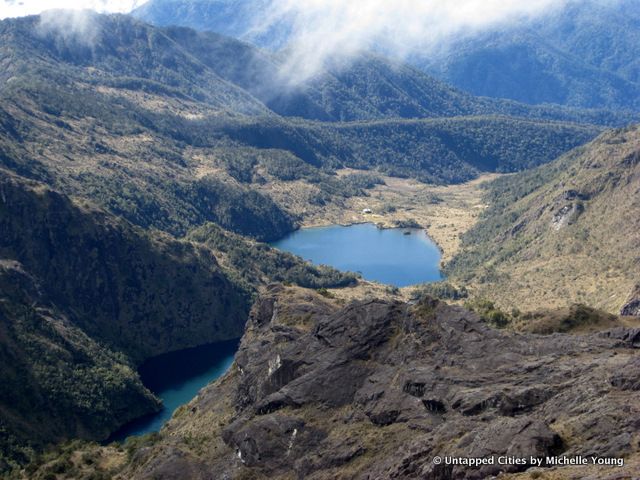 On the climb to Mount Wilhelm, the highest peak in Papua New Guinea
On the climb to Mount Wilhelm, the highest peak in Papua New Guinea
To complicate matters, on the Air Niugini website, all direct flights from Singapore to Port Moresby were completely sold out. I had pages of scribble in my notebook, attempting all possible ways to get there, even through Australia and the Philippines. Finally, I called the Jakarta office. They told me it was indeed booked but they would “check” and get back to me the next day. As with everything in Southeast Asia, nothing is what it seems and sure enough, a coach class ticket was suddenly available but I had to pay in person in Jakarta (I was in Bali). After using the rest of my travel budget for the plane ticket, I was on my way. [For travelers, just beware that sometimes you are quoted in US dollars, which is then converted into rupees at a terrible rate, on top of which you pay a 3-4% fee to pay using your credit card, only to have your credit card company charge you 3.5% to covert it back to US dollars.]
The flight was uneventful and filled with businessmen and a few families. At the airport in Port Moresby, the capital, it took two hours to get through customs, immigration and to check-in for my domestic flight to Mount Hagen in the Highlands where my friends lived. The flight was delayed and a veteran traveler told me that I’d be lucky if it even took off today. Fortunately, it did. On the flight, there was a drunk man in the exit row who had to be forcibly moved (not before peeing in his seat) and another man who tried to get up as the plane was landing.
At Mount Hagen, the airport was a small simple building and forklifts dumped our luggage in front of us. My friend Tim was supposed to meet me, but I couldn’t find him. The locals started to harass me so I approached some backpackers on my flight. They told me to hop into their truck and I just made a split second decision that it would be safer. At a nearby café, a girl tells me she is happy to be back in civilization after being “in the bush.” I look around amazed, because it looked pretty barren to me. Tim found his way to the café with a security officer and some VSO volunteers. He tells me that Mount Hagen is “the final frontier, beyond which is sheer chaos.” And also by the way, they’ve started to eat people again here.
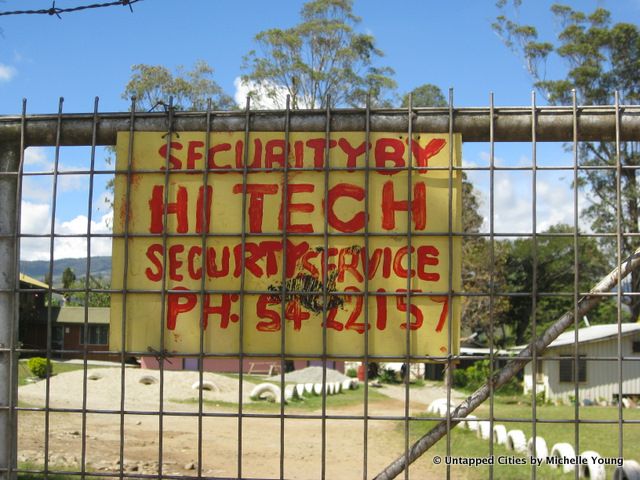
We toured the local hospital and checked out the grocery store. Unwrapped meat is piled into open freezer bins and Tim tells me this is “grade crap meat imported from New Zealand. They see it as, either to the dogs or to Papua New Guinea.” On the other hand, the market is big with a lot of fresh vegetables. Tim says they don’t need fertilizers in the country because the land is so rich.
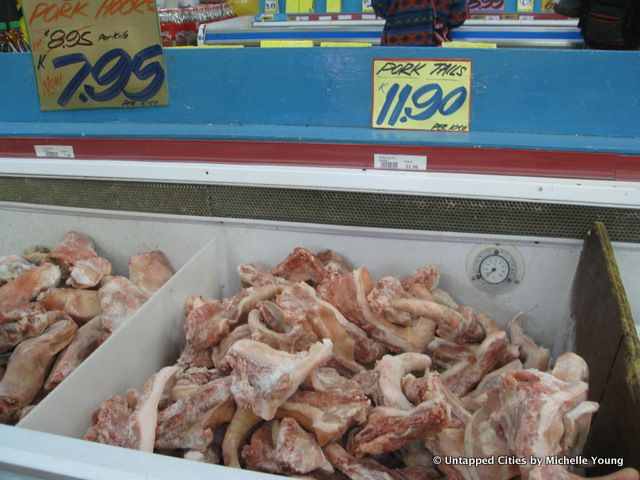
We hop into an ambulance to get to Kundiawa, the town that Tim lives with his wife Kristen. The road is bumpy and unpaved, and there have been a series of landslides recently. However, since the tribes own almost all of the land in the country, it’s hard to clear the roads.
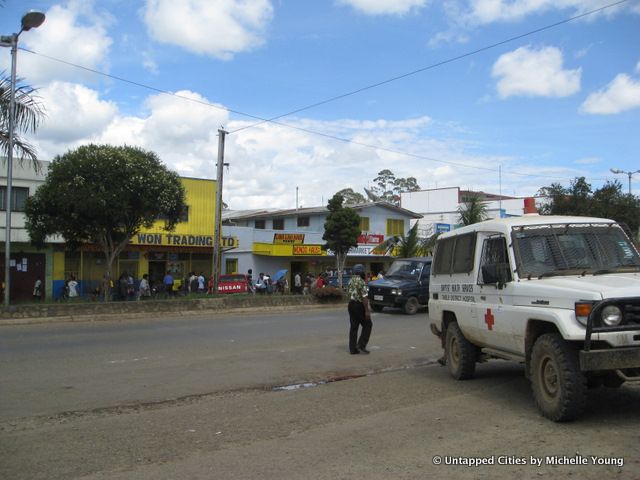
The next day, we decide to climb to Mt. Wilhelm, PNG’s highest peak at 4509 meters (~15800 ft). The drive there is treacherous–unpaved road on the edge of mountains, filled with boulders and stones. I take back anything I ever said about the roads in Cambodia being bad. The vehicle teetered over the edge down multiple thousand-foot drop-offs. No guardrails to be seen. On top of this, we rode in the back of a flatbed truck piled with locals, groceries and a tub of lard! I managed to sleep through all of this but did wake briefly when a can of Fanta was spilled on me and when a woman spit beetlenut juice on me (a tobacco-like substance they chew which looks like blood).
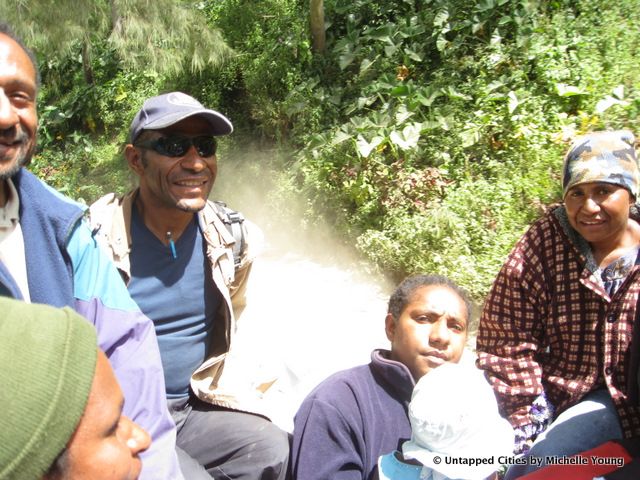
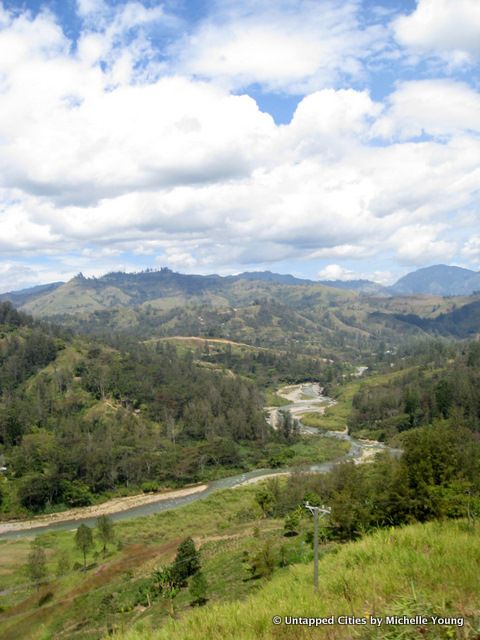
To get to the peak of Mt. Wilhelm you actually have to traverse through five other peaks. Lonely Planet describes it as a “walk,” but a large portion of the trek consists of loose rock, sheer cliff falloffs, rock faces and mud. You have to use guides since there is actually no trail. The climb starts at 2am with flashlights in order to reach the peak before the clouds roll in after sunrise. The climb is beautiful, as you witness the ecological changes that happen with altitude–rainforest transforms into grassland, waterfalls, culminating finally in rocky crags, lichen and ice.
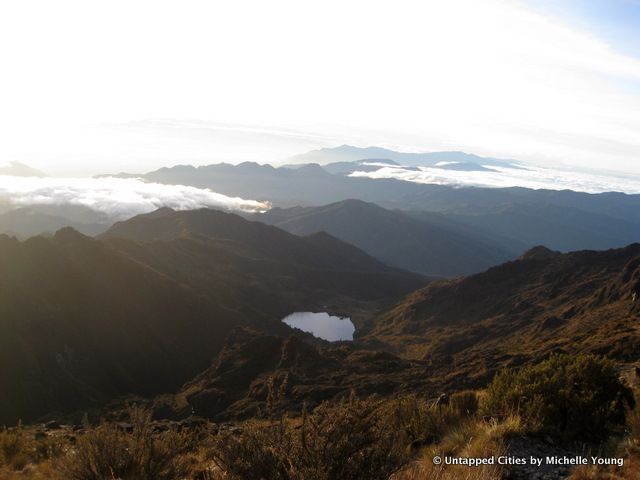
There are also remnants of WWII plane wrecks viewable along the climb.
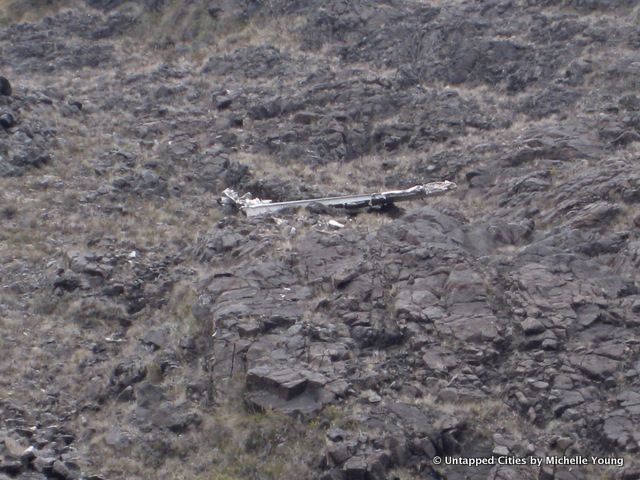
What Lonely Planet does tell you is that, “People HAVE died on this climb.” From base camp at Keglugl (2700m) it takes 3.5 hours to get to the lake huts (3600m). The lake huts are sans electricity, heat, hot water or bathrooms. Using candlelight, we cooked a meal of rice, peas and biscuits. Breakfast at 1am to more rice and peas. On our ascent, we saw the flashlights of people ahead of us. Within the first hour, nausea set in and I periodically vomited until all the rice and biscuits were gone. I soldiered on, confident that my adjustment to high altitude has traditionally been pretty smooth. Frequently, we would see climbers turn back due to altitude sickness-I recognized someone from my flight. Time stands still–at every turn, we are told the peak is “just after the next ridge.” When day breaks, we see how steep and rough the terrain really is.
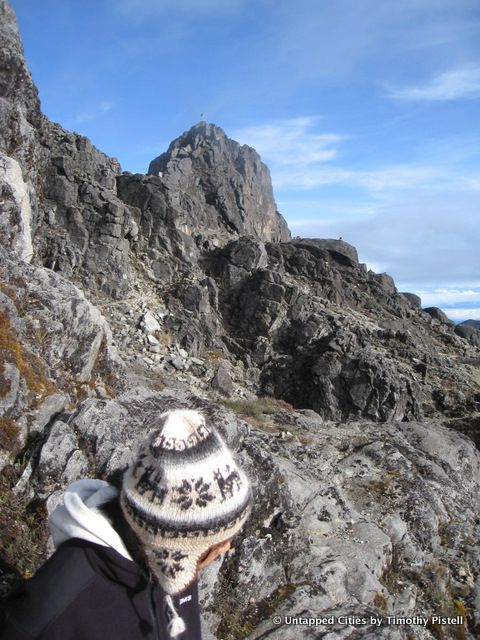 Finally, a glimpse of the peak
Finally, a glimpse of the peak
About 4/5 of the way, we came across a plaque about Australian Sergeant Christopher Donan who was last seen at the spot in 1971 before falling down a steep slope-pretty discouraging. We get to the summit at 7:30am. It’s gorgeous, with views of the mountain ranges and the coasts on both sides.
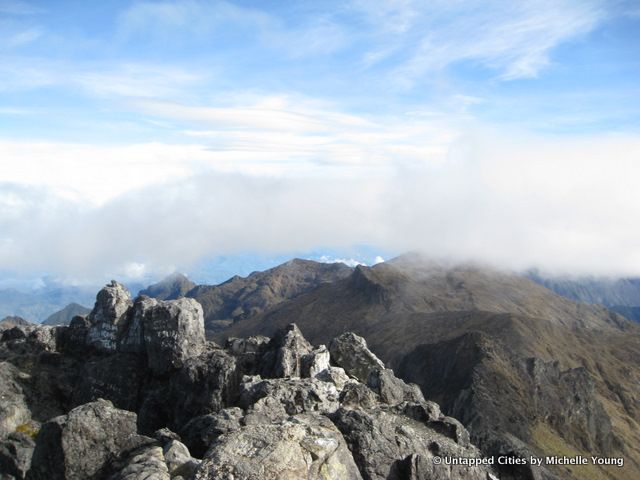
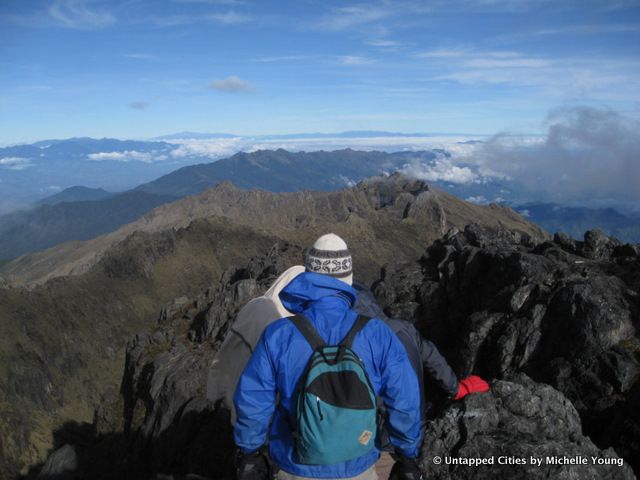
Back in Kundiawa, I visited the hospital and the government offices. Someone mentioned that Papua New Guinea was “developing backwards.” It was a country colonized by three different European powers and seen as a strategic location during WWII. Upon indendence in 1975, the country was situated on a presipice between a traditional clan-based hunter-gatherer society and a “modern” society. The people are nominally Christians but maintain their belief in black magic. When the colonizers left, the people of Papua New Guinea built runways and lookout towers, thinking that food and planes would just fall from the sky.
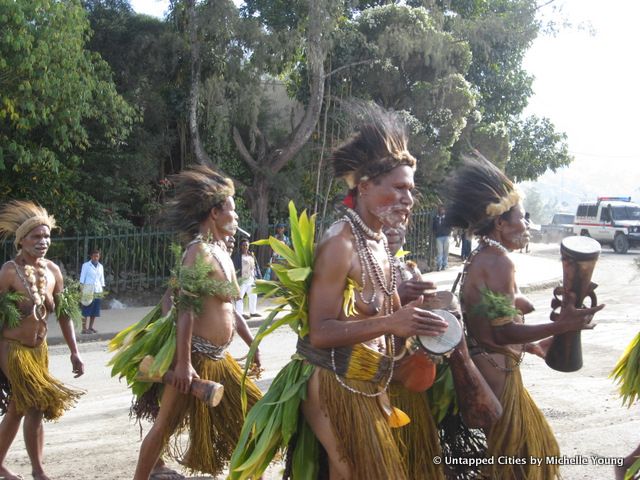
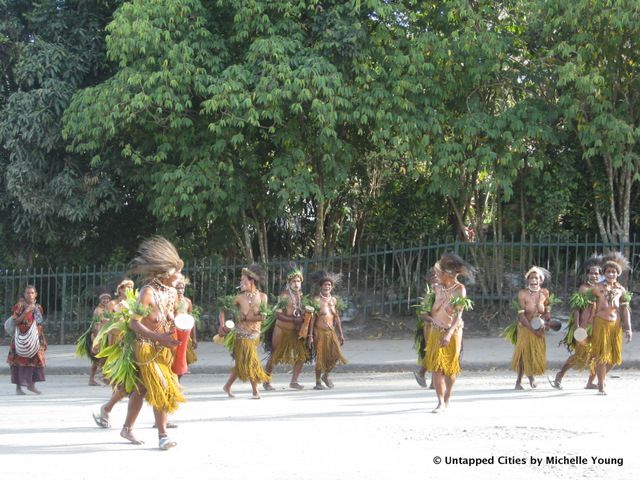
Today, corruption is rampant. The “parliamentary democracy” is a farce run by an elite that seems unconcerned that clan warfare is still commonplace, often spilling out into the streets. I was warned if we happened to end up in the middle of a fight in the street, to just keep walking, and I wouldn’t be harmed. Gun warfare is still isolated to battles in the bush. Corruption even affects cell phone service. The foreign provider is banned from connecting calls to landlines or cell phones operated by the government provider.
The roads throughout the country are unpaved, rocky and poorly maintained and flying it the only efficient means of transportation, effectively cutting out the poor majority. Although the land is extremely fertile, domestic trade is impossible due to the road conditions, so most families are subsistence farmers. Papua New Guinea ranks 149th out of 179 on the UN Human Development Index. Life expectancy is a paltry 45 years–malnutrition is widespread. Club feet, cleft lip, spine ebbifida, AIDS/HIV, and cancer also plague the population. In the government offices, one of the officials eagerly showed me the photographs he had taken on his trip along the border of Indonesia. A man had been promised penis enlargement through injection and was left badly mutilated.
Black magic significantly impacts the living conditions of women. They are accused of sorcery, beheaded and burned. Child abuse and domestic abuse are prevalent especially in rural areas where volunteers cannot access. Just behind our house, we heard a woman crying out for hours-and I was told it was not the first time.
Work is a new concept for PNG, so most use their offices as a place to nap, charge their cell phones, play solitaire. The concept of firing is also new, so fired employees remain on the payroll and/or you have to wage a protracted multi-month battle just to get them to move out of their office. Some people turn their offices into a home, since it’s nicer than accommodations in their village.
On my last day, Tim took me to the local warehouse where local residents buy clothing and books. You can only get used items and most are donated from Australia. Pornography and foul language are strictly regulated in the country, but you can get away with English curse words on a t-shirt. As a result, you often see children wearing t-shirts that say things like, “Fuck Your Mother.” There was a strangely high occurrence of Von Dutch clothing as well. I picked up a collection of hardcover W. Somerset Maughm books, timely since I had been reading The Razor’s Edge just that week.
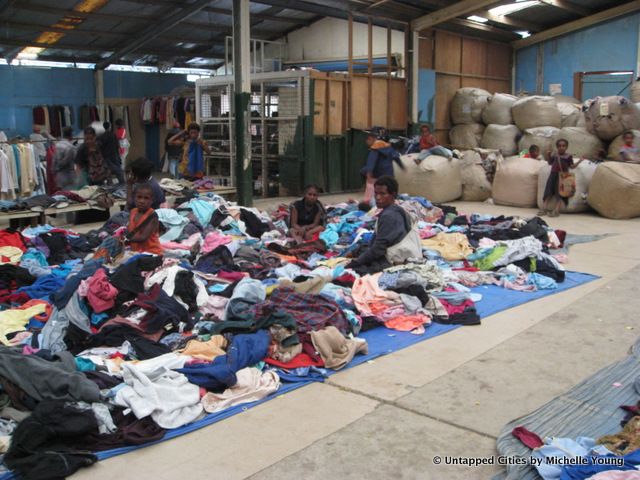
Our last stop was the bank, where Tim attempted to pick up his debit card. The bank had decided to close early and there were dozens of angry people trying to get in. The man next to us only had one flip-flop on. “I’m a police officer,” he said,” One day I’m going to rob this bank. I’m serious. I’m serious. This is discrimination!” Before I flew back to Singapore, Tim and I walked around Port Moresby, the capital twice-listed by the Economist as one of the world’s most dangerous cities. A man tried to steal something from Tim’s bag and the police promptly beat him with a bat while we were there. Tim tried to stop them but unfortunately it seemed like typical protocol.
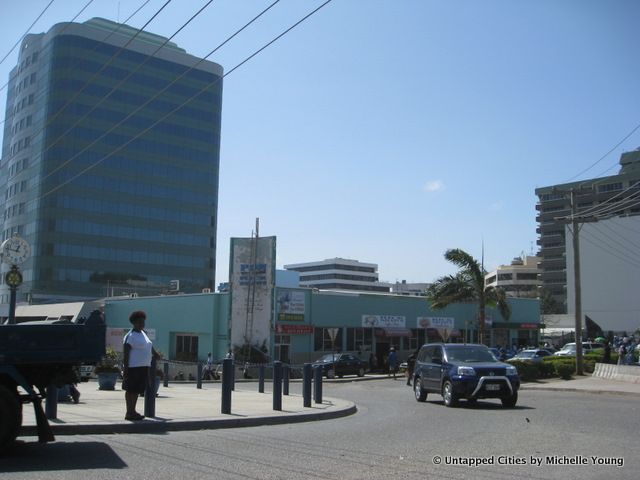 The capital of Port Moresby
The capital of Port Moresby
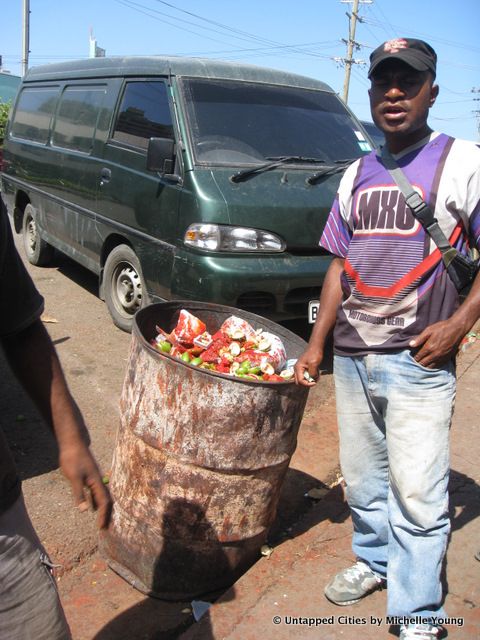 Discarded beetlenut juice
Discarded beetlenut juice
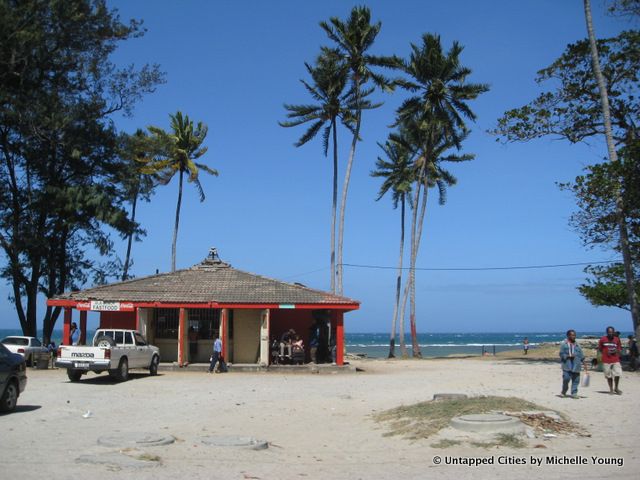 Waterfront in Port Moresby
Waterfront in Port Moresby
It’s been three years since I went to Papua New Guinea but it stands out as one of the most incredible of places-partially for its sheer contrast to anything I had ever witnessed before but also its beauty as perhaps one of the last frontiers on the globe. I’ll always remember the name the locals had for me, “White Mary,” even though I’m Asian, because to them I was simply not like them and therefore, “White.”
Subscribe to our newsletter